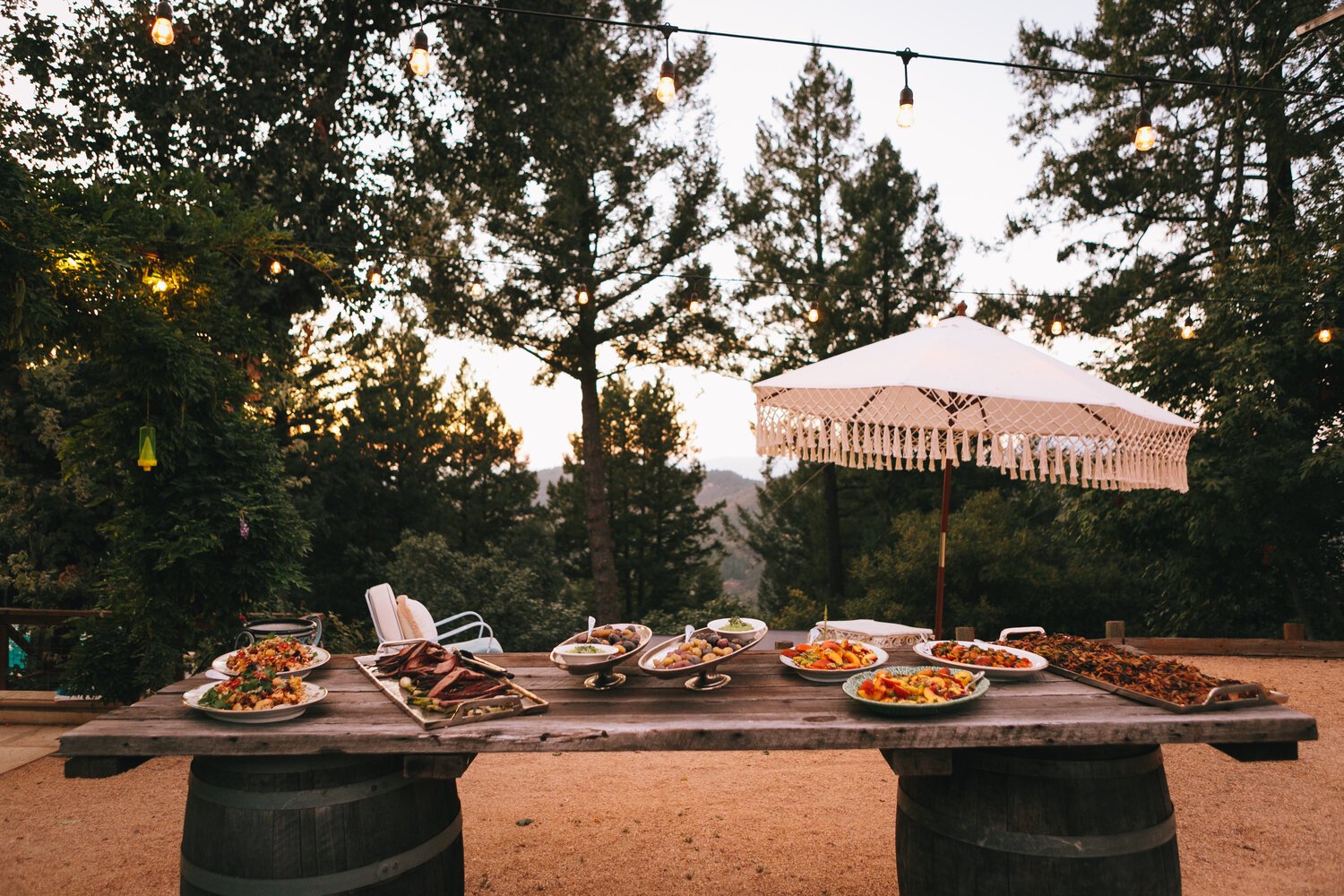Joseph Anew Talks Food Quality
Food is arguably one of the most important details of any event. As it relates to hospitality, it is also the area where you can spend as little or as much time as you'd like in perfecting the quality and experience.
From staying at various resorts and wellness centers across the world, we’ve learned the importance of closely overseeing this element ourselves. In this article, Joseph explains the challenges of getting wellness resorts to adjust to our standards, how it’s easier than ever to make food that “looks healthy,” and what to look for as a consumer in order to make the best choices for your health.
What challenges have you faced in bringing your standards into event venues?
One of the stories I find the most indicative of the type of struggle we endure happened a couple of years ago. In this instance, we bought out an entire wellness resort and asked for everything to be cooked in organic virgin coconut oil. We found out that this wellness resort was, in its regular course of business, cooking everything in canola oil because the coconut oil in the region was 100 times more expensive than canola. So if visiting outside of our retreat, you’d have a meal that looks wonderfully healthy—full of fresh vegetables and seafood caught that morning—that’s covered in this highly-inflammatory industrial seed oil. This is the first problem as it relates to “food that looks healthy.”
We also quickly realized that the requested coconut oil was rancid, another issue that’s surprisingly common across the tropics. It was freshly pressed, which is wonderful, but then being stored in plastic containers in a very hot and humid environment. Coconut oil has a powerful ability to leach toxins—the reason it’s so great for oil pulling—which makes it incredibly dangerous when stored in low-grade, cancer-causing plastic. We could taste it immediately, so of course we had to get one of our staff members to check an extra suitcase filled with gallons of virgin cold-pressed coconut oil to bring to us in this highly rural location. The last thing I’ll say is that quality olive oil is also hard to come across, with many olive oils being mixed with other seed oils, despite the label. As a consumer, quality oils are definitely the biggest thing to look out for because of the significant health concerns with inflammatory oils and the many elements that define a quality oil.
Why are seed oils so bad for us?
Seed oils are probably the most important thing to avoid on a health journey, very much in the same camp as processed sugar. Seed oils are incredibly inflammatory—even affecting our brain receptors, contributing to brain fog and affecting appetite and cravings. This is the most common unhealthy ingredient in food that simply looks healthy, as unfortunately, the cost savings associated with cooking in unstable vegetable oils are significant when compared to investing in high quality coconut or avocado oil. The oils we cook in are so important—we don’t even like to cook with olive oil as it will oxidize at high temperatures, and we reserve our high quality, extra virgin olive oil for cold applications such as dressings and sauces.
What about sugars?
This is another funny story: I once witnessed a smoothie being ordered at a well-known wellness resort—some sort of banana peanut butter cacao smoothie—and proceeded to watch the person behind the counter add scoops of JIF peanut butter into the shake (which contains sugar and heart disease-causing trans fats) and just when I thought it couldn’t get worse, top it off with an extremely sugary brand of nut milk. That just blew my mind. Sugars are seemingly obvious but those are the “ingredients” that sugars can be hidden in—your mind may not immediately go there if you’re just reading peanut butter and almond milk off the menu (and especially not when the decor looks fancy).
Another big one is that a lot of health resorts claim to not use refined or added sugars, but then use agave syrup—which research is showing is almost as bad for us as high fructose corn syrup. So it’s always best to ask, but a word of warning: you probably won’t like the answer. At RUNGA we do our best to minimize sugars—even from fruit—and our chefs always do an amazing and creative job at crafting beautiful menus with subtle amounts of sweetness simply when needed. Our desserts are primarily sweetened with pure maple syrup, coconut nectar and pure organic stevia that we source ourselves.
Is there anything else we should be on the lookout for?
Organic ingredients are very important, and probably a pretty obvious one, however you are not likely to find many mentions of organic when traveling in tropical places. More and more, “organic” is popping up all over the world, but for a lot of these places, you just may want to have faith that they are sourcing decent produce and washing it well. Given how easy it is in the US to source a fully organic menu (including even the oils, spices and garnishes), I find it very suspicious when a US-based wellness resort doesn’t mention organic or give lip service to the dirty dozen.
Although it’s unusual that resorts or even the best farm-to-table restaurants will commit to a fully organic menu, many will communicate that the majority of ingredients they source are organic, or that they're at least committed to sourcing organic fruits and vegetables from the dirty dozen list. It’s like that adage: "A dish is only as good as the ingredients it’s made with." Good ingredients are synonymous with organically and ideally biodynamically farmed produce, adding greater nutrients and flavor you can really taste.
Photography by Tammy Horton.



